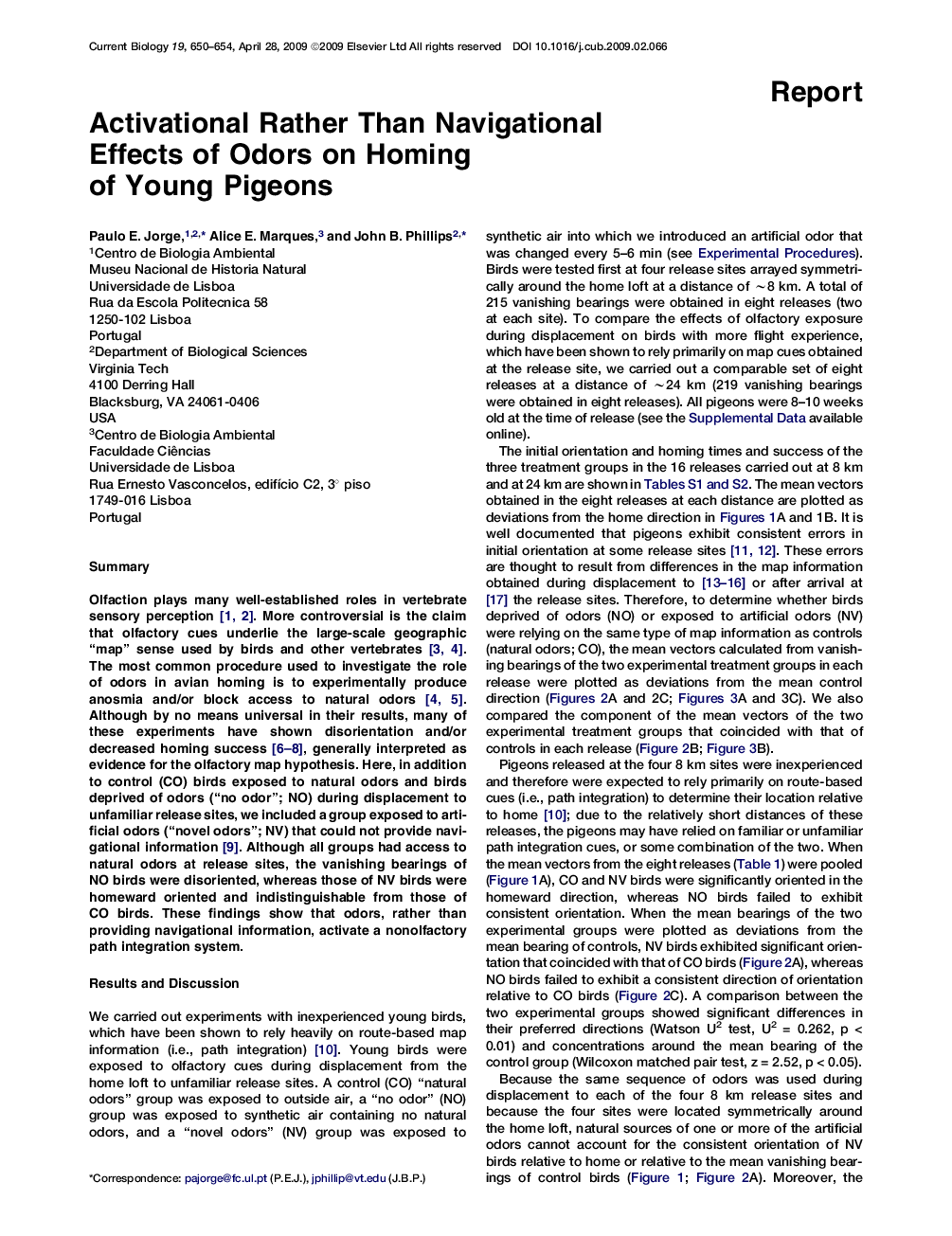| Article ID | Journal | Published Year | Pages | File Type |
|---|---|---|---|---|
| 2043355 | Current Biology | 2009 | 5 Pages |
SummaryOlfaction plays many well-established roles in vertebrate sensory perception 1 and 2. More controversial is the claim that olfactory cues underlie the large-scale geographic “map” sense used by birds and other vertebrates 3 and 4. The most common procedure used to investigate the role of odors in avian homing is to experimentally produce anosmia and/or block access to natural odors 4 and 5. Although by no means universal in their results, many of these experiments have shown disorientation and/or decreased homing success 6, 7 and 8, generally interpreted as evidence for the olfactory map hypothesis. Here, in addition to control (CO) birds exposed to natural odors and birds deprived of odors (“no odor”; NO) during displacement to unfamiliar release sites, we included a group exposed to artificial odors (“novel odors”; NV) that could not provide navigational information [9]. Although all groups had access to natural odors at release sites, the vanishing bearings of NO birds were disoriented, whereas those of NV birds were homeward oriented and indistinguishable from those of CO birds. These findings show that odors, rather than providing navigational information, activate a nonolfactory path integration system.
